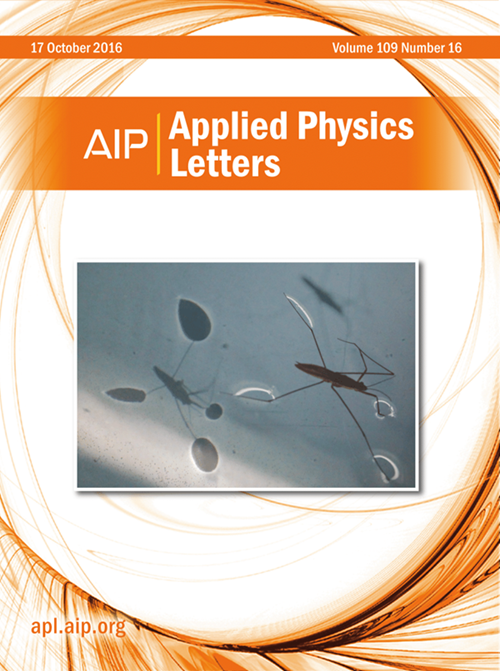六阶分布反馈的高功率2.2太赫兹量子级联激光器
IF 3.6
2区 物理与天体物理
Q2 PHYSICS, APPLIED
引用次数: 0
摘要
采用六阶Bragg光栅的分布式反馈(DFB)方案实现了低频单模太赫兹量子级联激光器的高功率发射。光栅在等离子体金属腔的顶部包层中实现,每个周期有四个适当放置的辐射狭缝。在脉冲模式下,在59k的单瓣光束中,在97k的最大工作温度下,检测到2.2太赫兹表面发射QCL的峰值光功率为112mw。数值模拟表明,DFB方案通过调整狭缝可以使辐射损失发生较大变化,因此可能适用于不同类型的QCL有源区。本文章由计算机程序翻译,如有差异,请以英文原文为准。
High-power 2.2 THz quantum-cascade laser with sixth-order distributed feedback
A distributed-feedback (DFB) scheme with sixth-order Bragg gratings realizes high-power emission for low-frequency single-mode terahertz quantum-cascade lasers (QCLs). The gratings are implemented in top claddings of plasmonic metallic cavities of the QCLs with four appropriately placed radiating slits per period. A peak optical power of 112 mW is detected for a 2.2 THz surface-emitting QCL in a single-lobed beam at 59 K, with a maximum operating temperature of 97 K in pulsed-mode. Numerical modeling indicates that the DFB scheme allows for a large variation of the radiative loss by adjusting the slits, and hence may be suitable for different types of QCL active regions.
求助全文
通过发布文献求助,成功后即可免费获取论文全文。
去求助
来源期刊

Applied Physics Letters
物理-物理:应用
CiteScore
6.40
自引率
10.00%
发文量
1821
审稿时长
1.6 months
期刊介绍:
Applied Physics Letters (APL) features concise, up-to-date reports on significant new findings in applied physics. Emphasizing rapid dissemination of key data and new physical insights, APL offers prompt publication of new experimental and theoretical papers reporting applications of physics phenomena to all branches of science, engineering, and modern technology.
In addition to regular articles, the journal also publishes invited Fast Track, Perspectives, and in-depth Editorials which report on cutting-edge areas in applied physics.
APL Perspectives are forward-looking invited letters which highlight recent developments or discoveries. Emphasis is placed on very recent developments, potentially disruptive technologies, open questions and possible solutions. They also include a mini-roadmap detailing where the community should direct efforts in order for the phenomena to be viable for application and the challenges associated with meeting that performance threshold. Perspectives are characterized by personal viewpoints and opinions of recognized experts in the field.
Fast Track articles are invited original research articles that report results that are particularly novel and important or provide a significant advancement in an emerging field. Because of the urgency and scientific importance of the work, the peer review process is accelerated. If, during the review process, it becomes apparent that the paper does not meet the Fast Track criterion, it is returned to a normal track.
 求助内容:
求助内容: 应助结果提醒方式:
应助结果提醒方式:


